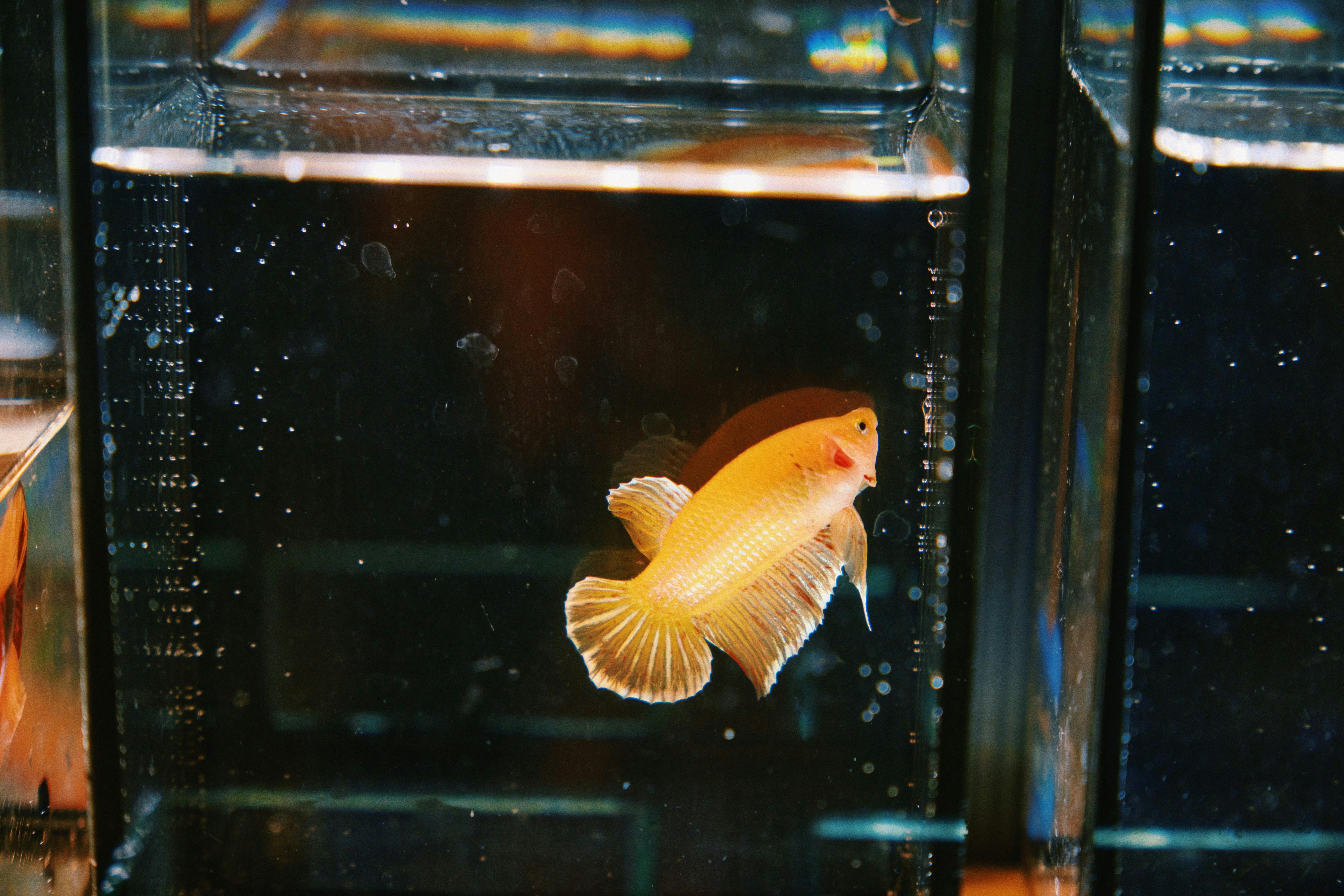Practical Guide to Cherry Shrimp Tank Setup in 2025
Setting up a cherry shrimp tank can be an exciting project for any aquarium enthusiast. These colorful and vibrant creatures not only add beauty to your freshwater aquarium but also play a crucial role in maintaining a balanced aquatic ecosystem. In this guide, we'll explore essential aspects of cherry shrimp care, including tank setup, breeding conditions, and maintaining optimal water parameters.
Cherry shrimp (Neocaridina heteropoda) are popular among aquarists for their hardy nature and vibrant colors, including the striking red of the red cherry shrimp and the deeper tones of the black cherry shrimp. By the end of this guide, you'll understand how to create the perfect habitat for your shrimp, ensuring they're happy and healthy.
We will cover everything from substrate choice and filtration systems to tank maintenance and shrimp compatibility. Additionally, we will discuss the best shrimp food, optimal water parameters, and how to properly cycle your tank. Let’s dive into the world of cherry shrimp and provide them the home they deserve!
Essential Steps for Setting Up Your Cherry Shrimp Tank
Choosing the Right Tank Size for Your Cherry Shrimp
When considering a shrimp tank, size matters. A minimum tank size of 10 gallons is recommended for cherry shrimp, providing ample space for them to thrive. Smaller tanks can lead to water quality issues, which are detrimental to shrimp health. Larger tanks not only create a stable environment but also allow for a more diverse aquatic habitat, including various plants and decorations.
Furthermore, a larger tank allows for colony growth. As shrimp breed, having sufficient space helps prevent overcrowding, reducing stress on the shrimps. It also makes water changes and tank maintenance much more manageable. Having the correct tank size can significantly improve the health and growth of your shrimp.
Setting Up the Aquarium Filtration System
A proper filtration system is vital for maintaining water quality in your shrimp tank. It is important to choose a filter that provides gentle water flow, as strong currents can stress the shrimp. A sponge filter is often a great choice for beginners setting up a cherry shrimp tank; it offers biological filtration while ensuring that shrimps are safe from being sucked in.
Additionally, consider using a filter with adjustable flow rates to accommodate the shrimp's needs. Regular maintenance of the filtration system is essential to prevent buildup of harmful waste. Cleaning the filter regularly will ensure that beneficial bacteria thrive, playing a crucial role in your tank’s nitrogen cycle.
Substrate Choice for Your Cherry Shrimp Tank
The substrate in your shrimp tank is more than just a decorative feature; it plays a significant role in the overall health of your aquatic environment. Choosing the right substrate helps in maintaining the proper chemistry of the water. Many aquarists recommend using fine gravel or specialized shrimp substrate that fosters beneficial bacteria growth and provides hiding spots for shrimp.
Additionally, the substrate can influence the pH level of your water, which is critical for shrimp health. Always choose a substrate that can help you achieve the ideal pH level, typically between 6.5 and 7.5 for cherry shrimp. This careful selection will greatly impact your shrimp’s overall well-being and breeding success.
Optimizing Water Parameters for Cherry Shrimp
Monitoring Water Quality and Chemistry
Maintaining excellent water quality is crucial for the health of your cherry shrimp. It's essential to regularly test parameters such as ammonia, nitrite, and nitrate levels, ensuring they remain at safe levels. The ideal environment for cherry shrimp typically requires a temperature range of 22-26°C and stable pH levels.
Make use of quality water testing kits available in the market to keep track of these parameters. Any fluctuations can lead to stress or even death among your shrimp. Testing should be frequent, especially in the initial tank cycling phase, where monitoring ensures your shrimp thrive in their new environment.
Understanding the Nitrogen Cycle in Shrimp Tanks
Establishing a proper nitrogen cycle is paramount for any aquarium, especially for shrimp tanks. This process involves beneficial bacteria converting harmful ammonia and nitrite into less harmful nitrates, which are removed during regular water changes. A properly cycled tank minimizes the risk of sudden spikes in toxins, allowing your shrimp to grow and breed comfortably.
To cycle a freshwater shrimp tank effectively, consider using substrate from an established aquarium, which contains beneficial bacteria. Live plants can also aid in the cycling process, enhancing water quality as they absorb waste products. Aim for a cycle period of about four to six weeks to ensure a safe environment for your cherry shrimp.
Creating a Natural Habitat with Aquatic Plants
Integrating live plants into your shrimp tank not only enhances its beauty but serves multiple functional purposes, including hiding spots and natural filtration. Plants such as Java moss and Anubias provide excellent shelters for baby shrimp and help maintain water quality by absorbing nitrates.
Moreover, live plants contribute to a more stable ecosystem by improving water parameters, providing oxygen, and creating a more appealing environment for both shrimp and their caretakers. When designing your tank, ensure that there’s ample plant coverage to simulate a natural habitat, fostering healthy shrimp behavior and encouraging breeding.

Feeding and Caring for Your Cherry Shrimp
Best Foods for Cherry Shrimp and Feeding Strategies
Cherry shrimp thrive on a diverse diet that ensures their nutritional needs are met. High-quality shrimp food specifically formulated for invertebrates is crucial; look for options rich in spirulina, protein, and fiber. Additionally, supplement their diet with blanched vegetables such as zucchini and spinach to promote shrimp growth and health.
Create a feeding schedule that includes a variety of foods to ensure a balanced diet. It's essential to feed small amounts to avoid overfeeding, which can lead to water quality issues. Observe your shrimp's behavior during feeding times to determine their preferences and adjust accordingly to promote healthy feeding habits.
Understanding Cherry Shrimp Behavior
Understanding the behavior of your cherry shrimp can greatly enhance your experience as an aquarist. These shrimp are generally peaceful and social creatures that thrive in community tanks with other shrimp or compatible fish. Observing their activity levels, grazing habits, and interaction with their environment can provide valuable insight into their health and well-being.
Regularly watching your shrimp helps you identify any changes in behavior that might indicate health issues. Stress can cause unusual behavior, so it's essential to ensure your shrimp feel secure in their environment. Creating a heavily decorated tank with plenty of hiding spots can significantly reduce stress levels and improve their quality of life.
Cherry Shrimp Breeding Tips and Techniques
Creating Optimal Breeding Conditions
Breeding cherry shrimp can be rewarding and enjoyable. To encourage breeding, ensure water parameters are ideal—temperature between 22-26°C and stable pH levels. Provide ample hiding spots using plants or decorations to create a safe environment for pregnant females.
Monitor your shrimp colony regularly for signs of mating behavior. When paired successfully, you’ll notice the female carrying eggs, often referred to as “berried.” This is a strong indicator of successful breeding conditions. Ensure you are equipped with adequate knowledge about the shrimp lifecycle to enhance breeding success.
Common Cherry Shrimp Diseases and Prevention
Maintaining shrimp health is crucial, as they can be susceptible to various diseases, including bacterial infections and molting problems. Monitoring water quality and promptly performing water changes can help prevent these issues. Stress is a significant factor leading to disease; therefore, maintaining stable water conditions is essential.
Identifying early signs of sickness can make a considerable difference. Common symptoms include lethargy, discoloration, or abnormal swimming patterns. Familiarize yourself with preventive measures, such as minimizing stress and regularly checking water parameters to maintain a healthy shrimp colony.
Understanding Shrimp Compatibility in Community Tanks
When setting up a community tank with cherry shrimp, knowing which species are compatible is vital. Look for shrimp-friendly fish species, such as small tetras or rasboras, that won't pose a threat to your cherry shrimp. Avoid larger or aggressive fish that may prey on the shrimp.
Additionally, consider the territorial behavior of potential tank mates to ensure a harmonious community. A well-balanced tank with compatible species will create an enriching environment for both shrimp and their companions while minimizing stress.

Maintaining Your Cherry Shrimp Tank for Long-Term Success
Effective Tank Maintenance Tips
Consistent tank maintenance is a key aspect of successful shrimp care. Perform regular water changes of 10-20% weekly to promote water quality and prevent buildup of toxins. During these water changes, make it a habit to check water parameters, ensuring they remain within ideal ranges.
Regular cleaning of the substrate and decorations is necessary to prevent algae or waste buildup. Utilizing a siphon during cleanings will help remove debris without disturbing the shrimp too much. Establish a maintenance schedule to keep your tank in prime condition.
Monitoring and Adjusting Water Parameters
Being proactive about water parameters is crucial for the longevity of your shrimp tank. Regularly inspect your test kits and make adjustments as needed to maintain the delicate balance of pH, ammonia, and nitrate levels. This will ensure a stable environment for your shrimp colony.
Utilizing a reliable water conditioner during water changes will also help in maintaining optimal conditions. Check for fluctuations following changes, as these can impact the shrimp's health. Always take notes to track changes across different water parameter tests.
Conclusion
Setting up a cherry shrimp tank can be a rewarding experience, providing a home for vibrant and interactive aquatic life. By paying close attention to the essential elements of tank setup, from selecting the right size and filtration system to creating a thriving aquatic habitat, you can ensure your cherry shrimp will thrive.
Remember to prioritize water quality, feeding strategies, and tank maintenance as they are crucial for your shrimp’s health and successful breeding. With the right knowledge and dedication, you can establish a flourishing shrimp colony that brings joy and beauty to your freshwater aquarium.
